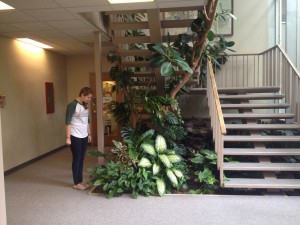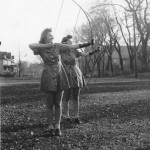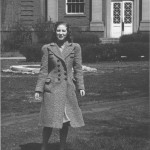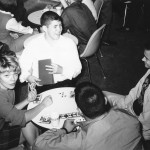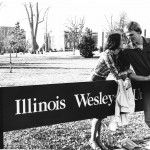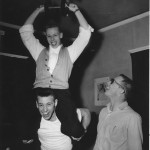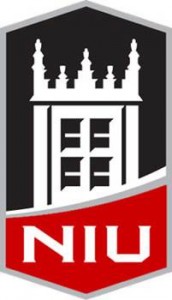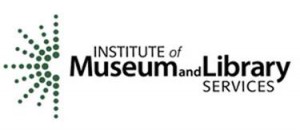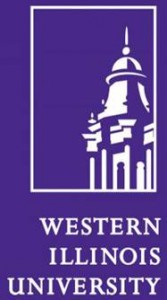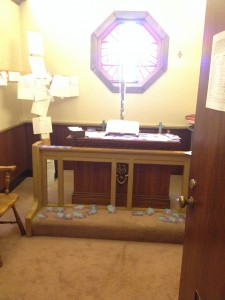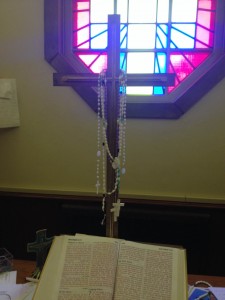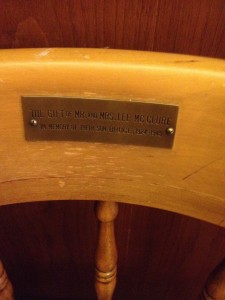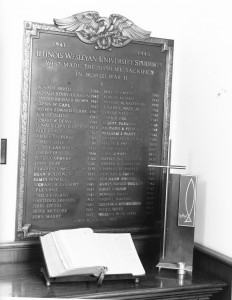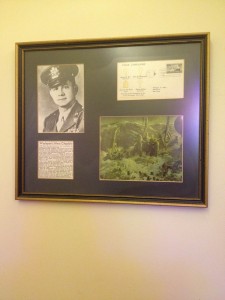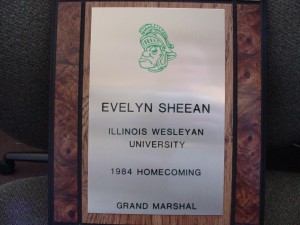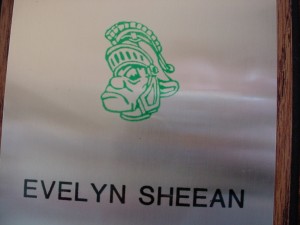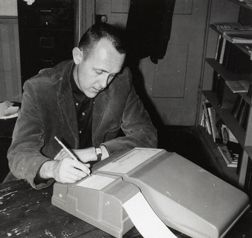This post summarizes changes noted in the French Department by examining the Catalogue of Courses. Course catalogs from 1851-1954 are available online; the rest are available in print in the University Archives.
- There is no evidence of any French courses until 1871 but then it was not offered as part of the main courses of study. In the 1871-72 course catalog, it is stated that “classes will be organized whenever desired in either of all of them,” which includes French, Italian, and Spanish. This course was offered by a Professor Merriman. However, this only lasted for two school years and ended in 1873.
- French was offered again in the 1879-80 academic year during student’s sophomore year. Students could take French, German, Greek, or Latin. Taught by Professor Reymond.
- In 1881, French is offered as a post-graduate area of study, or could replace Greek, German, or Latin courses. No instructor was listed.
- The 1889-90 academic year French was offered again and then was consecutively offered until present day, with an exception of the 1922-23 academic year where no French was offered.
- Often French was accompanied by/interchangeable with German, but there was a much heavier emphasis placed on German. For instance, in the course descriptions, the German department would receive almost a full page of description whereas French would receive 2-3 sentences. Also, German would have 5+ courses offered whereas French would only have 2 courses.
- The February 1, 1889 Elite Journal (p. 12) notes students interests in having French courses offered.
Titles of French Departments:
1889-1895: French (courses)
1895-1899: French and German
1899-1910: Modern Languages (included both French and German, with subheadings for
both)
1910-1918: Department of French
1918-1921: Romance Languages (French and Spanish)
1922: No French offered
1923-1939: Modern Languages (French, German, and Spanish)
1939-1995: Foreign Language Department (Classical and Modern languages subheadings)
1995-2005: French Department
2005-Present: French and Francophone studies
Department Chairs/Heads:
1871-1873: Professor Merriman
1879-1880: Professor Reymond
1889-1891: Professor Wait
1891-1892: Professor Steele (head of Modern Languages and Latin)
1892-1895: Professor Heidel
1895-1896: Professor Snyder
1896-1899: Madame de Blumenthal (listed as instructor)
1899-1900: Ms. Shephard
1900-1905: Ms. Smith
1905-1908: Ms. Mitchell
1908-1909: Professor Graham
1909-1911: Professor Eggert
1911-1913: Professor Corstvet
1913-1914: Parlin (listed as instructor)
1914-1916: Professor W. Ferguson
1916-1918: Laitem (listed as instructor)
1918-1921: Professor Norton
1923-1934: Professor W. Ferguson
1934-1944: Professor C. Ferguson and Professor W. Ferguson
1944-1951: Professor C. Ferguson
1951-1952: Professor Norwood and Professor Bettger
1952-1955: Professor Norwood
1955-1957: Professor Labarthe (Professor Norwood on leave)
1957-1959: Professor Deitz
1959-1966: Professor Bettger
1966-1971: Professor Holm
1971-1976: Professor Troyanovich
1976-1979: Professor Moretto
1979-1984: Professor Huseman
1984-1988: Professor McDonald
1988-1990: Professor Fajardo
1990-1993: Professor Klingenberg
1993-1999: Professor Matthews
1999-2002: Professor Callahan
2002-2013: Professor Sheridan
2013-Present: Professor Matthews

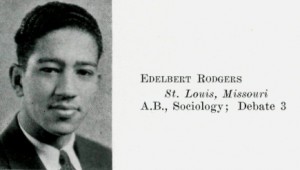
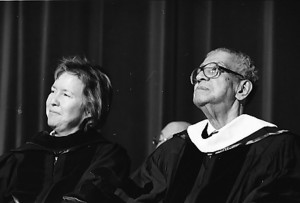
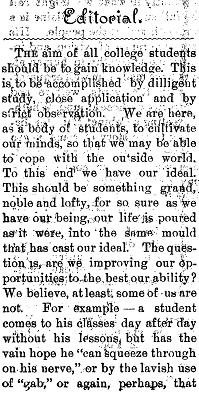
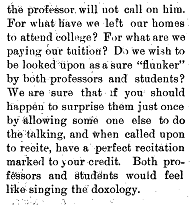
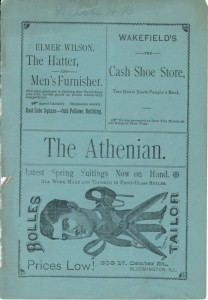
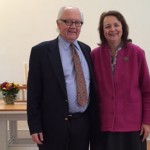
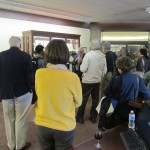
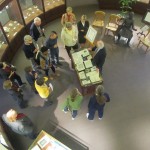
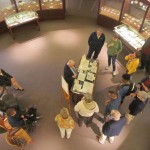
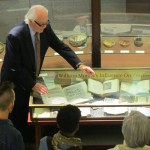
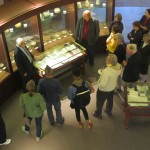
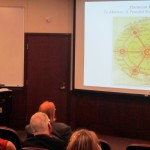
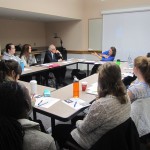
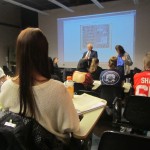
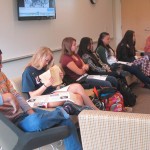
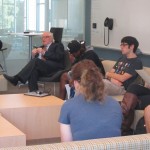
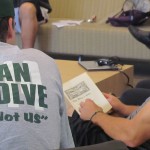
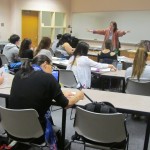
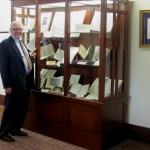
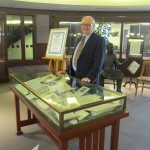
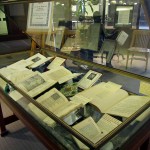
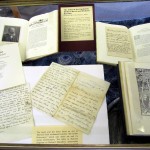
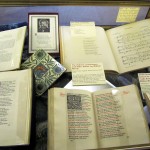
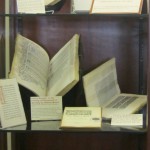
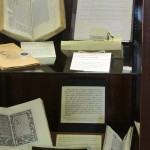
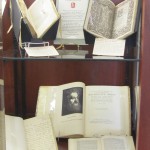
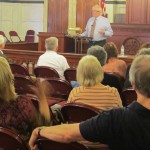
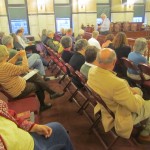
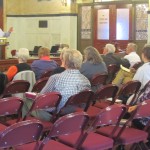
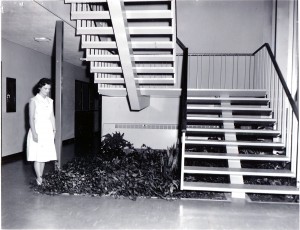 Re-photography involves re-enacting a scene from an earlier period in time by recreating it in a modern context. This is done in at least two ways: by deliberate restaging or reenactment without any variation such as is illustrated here, or by using an old photo for inspiration to create something with a modern twist.
Re-photography involves re-enacting a scene from an earlier period in time by recreating it in a modern context. This is done in at least two ways: by deliberate restaging or reenactment without any variation such as is illustrated here, or by using an old photo for inspiration to create something with a modern twist.